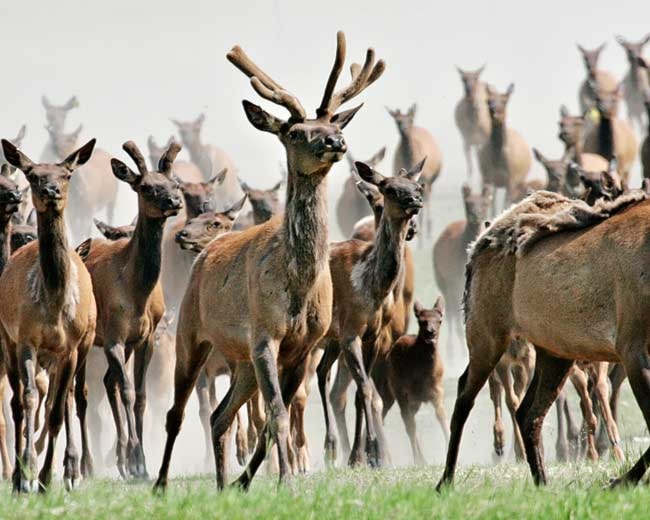Elk hunters will only be allowed to shoot cows in Takhini and Braeburn this autumn, Environment Yukon announced yesterday.
It’s an unusual decision. By now, hunters are accustomed to being told to only hunt the bulls of big game species suspected of population declines.
But fewer elk is precisely what the territory is shooting for.
Estimates of the Takhini elk population grew to 275 in February. That’s well above the target of restoring 2007’s population level of 175 animals.
The nearby Braeburn population is estimated to be between 50 and 100 - a wide spread, because no aerial survey has been done.
Elk are not native to the Yukon. The animals were introduced from Alberta, at the behest of the territory’s hunters, in the 1950s. The Takhini and Braeburn herds remained small, at a total of about 100 animals, until the 1990s, when an additional 100 animals were introduced.
Warm winters, the protection of young offered by tick pens and perhaps the plentiful food offered by nearby farms all appear to have contributed to help the animals thrive.
Since the elk hunt began three years ago, the sex ratio of the animals has become “fairly skewed,” said Rick Ward, Yukon’s elk biologist. He suspects hunters have put more effort into pursuing bulls for trophies and for weight.
Hunters with bull permits had a 73 per cent success rate over the past two seasons. Hunters with cow permits only succeeded 31 per cent of the time.
To keep elk healthy and free of disease, it’s important to have a balance between cows and bulls, according to the department.
Past elk hunts also raised concerns about multiple hunters pursuing the same animals. To ease this congestion, hunting permits will be trickled out slower this year, with additional permits released at the end of October, if needed, to provide another opportunity for unsuccessful permit-holders.
Hunters will be able to apply for both cow and bull permits outside of the Takhini and Braeburn area.
There are no plans to repeat efforts to curb the spread of ticks among big game by penning elk during the winter. Winter ticks appear to be “fairly well established” in both elk and deer, said Ward.
“It looks like they’re here to stay.”
But that’s not as big a worry as it once was. While roughly half of the elk and deer examined by biologists in recent years have had ticks, they’ve only been found in “very low numbers”- not enough to affect the health of an animal.
“The winter ticks don’t appear to be as much of a concern as we thought,” said Ward.
Penning elk was tricky and expensive. Now it also looks like it was a futile task, as a means of containing winter ticks.
As the insects are carried by deer as well as elk, penning one species “was never going to be sufficient to eradicate ticks from the landscape,” said Ward.
Hunters have until June 17 to apply for elk permits. The draw will be held the following week.
Contact John Thompson at
johnt@yukon-news.com.
